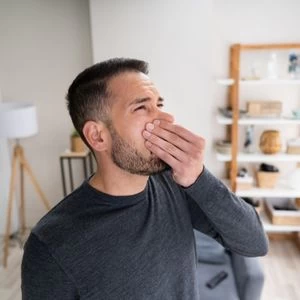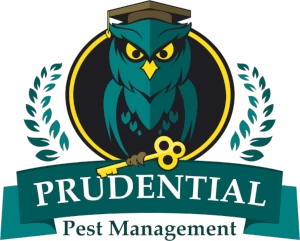Odor Removal Services
What’s That Smell?
 Do you have a dead animal smell in your house?
Do you have a dead animal smell in your house?
Dead animal smells are often a sign of an infestation or pest problem. Unfortunately, finding or getting to a dead critter in the wall can be difficult, if not impossible, without destroying the wall. This is not practical as the exact location is often challenging to pinpoint. So, the best solution is to inspect for root causes. We can check for pest issues and offer you a solution to prevent the problem in the future. A mouse typically stinks for a few weeks, and we recommend taking care of the rodent problem while waiting for the odor to dissipate. Other common critters that may cause odors in the home or office are raccoons, bats, squirrels, rats, and chipmunks. Prudential inspects for any of these pests and more. Call us anytime for a $129 Service Inspection; the inspection fee will be applied to any services our wildlife technician finds, making the inspection free with the purchase of a solution.
What about the odor?
It’s best to remove the source, but the reality is that it is often inaccessible. Dead rodents can die in the walls or areas we can’t reach. It is not practical to start ripping drywall apart only to find nothing. You may use hydroxyl machines for occupied environments, Ozone machines for unoccupied locations, or both hydroxyls and ozone simultaneously. These can be purchased on Amazon. These machines degrade odors at a molecular level. You may also try covering the scent with a deodorizer or room diffuser until the smell disappears.
What is Hydroxyl?
Hydroxyl is our first choice for odor control. Hydroxyl generators use the same broad range of UV radiation as the sun to naturally clean and deodorize indoor environments. They are great at eliminating odors. Hydroxyl is much safer than ozone and is the same type of system commonly used in hospitals to scrub bacteria and viruses from the air using UV lights. Hydroxyl can be used while the room is occupied and is considered a safe alternative to ozone.
Hydroxyls are known to be one of nature’s safest and most potent oxidizers of pollutants. The hydroxyl-only function is safe for occupied environments, and hydroxyl generators also don’t leave behind that chemical smell that ozone does. Hydroxyls work primarily by abstracting hydrogen atoms, thereby dismantling the molecular structure of odors and volatile organic compounds (VOCs).
What is Ozone?
Ozone is effective at removing some odors from the air and non-porous surfaces. Ozone eliminates odors differently than Hydoxyl, which may affect different odor compounds. Ozone generators intentionally produce the gas ozone to deodorize, disinfect, kill, or remove dangerous or irritating airborne particles in indoor environments. At high levels, the gas can be harmful to people and pets because it reacts to organic compounds, so it must only be used when areas are unoccupied and aired before re-entry.
Ozone is a molecule composed of three oxygen atoms. Two bits of oxygen form the essential oxygen molecule–the oxygen we breathe that is essential to life. The third oxygen atom can detach from the ozone molecule and re-attach to molecules of other substances, thereby altering their chemical composition.
Ozone can adversely affect indoor plants and damage rubber, electrical wire coatings, fabrics, and artwork containing susceptible dyes and pigments (U.S. EPA, 1996a). Its ability to react with other substances, such as odors, makes ozone the second choice for odor control.
Call us today for your Service Inspection. (810)410-8563
Prudential Pest Management services the following areas in Michigan:
Genesee County, Tuscola County, Lapeer County, Oakland County, Livingston County, Shiawassee County, Saginaw County, Burton, Clio, Davison, Fenton, Flint, Flushing, Grand Blanc, Linden, Montrose, Mount Morris, Swartz Creek, Gaines, Goodrich, Lennon, Montrose, Otisville, Otter Lake, Clayton Township, Fenton Township, Flint Township, Flushing Township, Genesee Township, Grand Blanc Township, Montrose Township, Mount Morris Township, Mundy Township, Vienna Township, Argentine Township, Atlas Township, Davison Township, Gaines Township, Richfield Township, Thetford Township, and Forest Township. We service all communities in Genesse and its surrounding counties.
